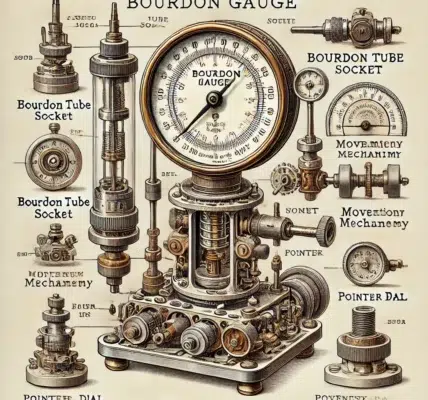Cast iron and cast steel are both types of cast metals that are produced by pouring liquid metal into molds.
Cast iron is an iron-carbon alloy that typically contains 2-4% carbon, 1-3% silicon, and small amounts of other elements. It is known for its excellent castability, machinability, and wear resistance, but it also tends to be brittle and has a lower tensile strength than steel. Cast iron is commonly used for items such as pots and pans, cookware, machinery parts, and pipe fittings.
Cast steel, on the other hand, is an alloy of iron and carbon that typically contains less than 2% carbon and small amounts of other elements such as nickel, chromium, and molybdenum. It is known for its high strength, toughness, and durability, and is often used in applications that require high strength and wear resistance, such as machinery parts, gears, and ball bearings.

Both cast iron and cast steel are produced using similar casting techniques, such as sand casting and investment casting. However, the composition and properties of the final product can vary depending on the specific alloy used and the casting process employed.
Cast Iron vs Cast Steel
Cast iron and cast steel are both types of cast metals that are produced by pouring liquid metal into molds, but they have several key differences in terms of composition, properties, and applications.
Composition:
- Cast iron typically contains 2-4% carbon, 1-3% silicon, and small amounts of other elements such as manganese and phosphorus. The high carbon content gives cast iron its characteristic brittleness and hardness.
- Cast steel, on the other hand, typically contains less than 2% carbon and small amounts of other elements such as nickel, chromium, and molybdenum. The low carbon content gives cast steel its characteristic ductility and toughness.
Properties:
- Cast iron has excellent castability, machinability, and wear resistance, but it is also known for its brittleness and low tensile strength.
- Cast steel has high strength, toughness, and durability, but it is also known for its poor castability and high cost.
Applications:
- Cast iron is commonly used for items such as pots and pans, cookware, machinery parts, and pipe fittings.
- Cast steel is often used in applications that require high strength and wear resistance, such as machinery parts, gears, ball bearings, and structural components.
Production process:
- Both cast iron and cast steel are produced using similar casting techniques, such as sand casting and investment casting. However, the specific alloy used and the casting process employed can affect the properties of the final product.
In summary, cast iron is known for its excellent castability, machinability, and wear resistance, but it is also brittle and has a lower tensile strength than steel. Cast steel, on the other hand, is known for its high strength, toughness, and durability, but it is also more expensive and difficult to cast than iron.
Choosing Cast Iron
Choosing this iron for a specific application will depend on several factors, such as the desired properties of the final product, the manufacturing process, and the cost.
Properties:

- Cast iron has excellent castability, machinability, and wear resistance, making it a good choice for applications that require a high degree of dimensional accuracy and a smooth surface finish. This iron also has good heat retention and distribution, making it ideal for cookware such as pots and pans.
Applications:
- This iron is commonly used for items such as pots and pans, cookware, machinery parts, and pipe fittings. It is also used in construction, particularly in architectural elements such as ornamental items and building facades.
- This iron is typically used in applications where high strength, toughness and ductility are not required.
Manufacturing process:
- This iron is relatively easy to cast and machine, making it a cost-effective option for large-scale production. The process of casting iron involves heating it to a liquid state and then pouring it into a mold to cool and solidify.
Cost:
- This iron is typically less expensive than other metals such as steel, making it a cost-effective option for many applications.
Considerations:
- This iron has a lower tensile strength than steel, making it more brittle and less suitable for applications that require high strength and toughness.
- This iron is also susceptible to rust and corrosion, so it may require additional coatings or treatments to protect it from the elements.
In summary, choosing this iron depends on the application, process and cost. This type of iron is known for its excellent castability, machinability, and wear resistance, but it is also brittle and has a lower tensile strength than steel. It is a cost-effective option for many applications, but it may require additional coatings or treatments to protect it from the elements.
Choosing Cast Steel
Choosing cast steel for a specific application will depend on several factors, such as the desired properties of the final product, the manufacturing process, and the cost.
Properties:
- Cast steel has high strength, toughness, and durability, making it a good choice for applications that require high strength and wear resistance. It also has good corrosion resistance, and it can be heat treated to improve its strength and hardness.
Applications:
- Cast steel is often used in applications that require high strength and wear resistance, such as machinery parts, gears, ball bearings, and structural components. It is also used in the automotive and aerospace industries, as well as in the production of heavy equipment and mining machinery.

Manufacturing process:
- Cast steel is more difficult to cast and machine than cast iron, and it typically requires more expensive equipment and techniques. The process of casting steel involves heating it to a liquid state and then pouring it into a mold to cool and solidify.
Cost:
- Cast steel is typically more expensive than cast iron, making it a less cost-effective option for many applications.
Considerations:
- Cast steel is more difficult to cast and machine than cast iron, making it a more expensive option for large-scale production.
- The composition of the steel and the heat treatment process used can affect the properties of the final product, so it’s important to choose the right alloy and heat treatment for the specific application.
In summary, choosing cast steel depends on the application, process and cost. Cast steel has high strength, toughness, and durability and is suitable for applications that require high strength and wear resistance. It is more difficult to cast and machine than cast iron, making it a more expensive option for large-scale production. The composition of the steel and the heat treatment process used can affect the properties of the final product, so it’s important to choose the right alloy and heat treatment for the specific application.
Cast Iron vs Cast Steel: How to Identify
Cast iron and cast steel can be difficult to distinguish just by looking at them, but there are a few ways to identify which one you have.
- Magnetic Test: One of the easiest ways to tell the difference between cast iron and cast steel is by using a magnet. Cast iron is not magnetic while most of the cast steels are magnetic.
- Sound Test: Another way to identify cast iron and cast steel is by striking them with a metal object. Cast iron will produce a dull, muffled sound when struck, while cast steel will produce a sharp, ringing sound.
- Density Test: Cast iron is generally more dense than cast steel, so if you have access to accurate measuring tools, you can measure the density of the metal to determine whether it is cast iron or cast steel.
- Hardness Test: Cast iron is generally harder than cast steel, so if you have access to a hardness tester, you can test the hardness of the metal to determine whether it is cast iron or cast steel.
- Visual Inspection:
- Cast iron is often gray or black in color, and it may have a rough, grainy surface texture.
- Cast steel is usually shiny and smooth, and it may be a light gray or silver color.
It’s important to note that these methods are not foolproof, and that some alloys of cast steel and cast iron may have similar properties and visual appearances. Therefore, it’s best to consult with a metallurgist or a materials engineer for a definitive identification.
In summary, identifying cast iron and cast steel can be difficult, but there are a few ways to do it, such as magnetic test, sound test, density test, hardness test and visual inspection. These methods are not foolproof and it’s best to consult with a metallurgist or a materials engineer for a definitive identification.
Cast iron and cast steel are both types of cast metals that are produced by pouring liquid metal into molds. Cast iron is an iron-carbon alloy that typically contains 2-4% carbon and known for its excellent castability, machinability, and wear resistance, but it also tends to be brittle and has a lower tensile strength than steel.
Cast steel, on the other hand, is an alloy of iron and carbon that typically contains less than 2% carbon and known for its high strength, toughness, and durability. Identifying cast iron and cast steel can be done by using a magnet, sound test, density test, hardness test and visual inspection. However, it’s best to consult with a metallurgist or a materials engineer for a definitive identification.




